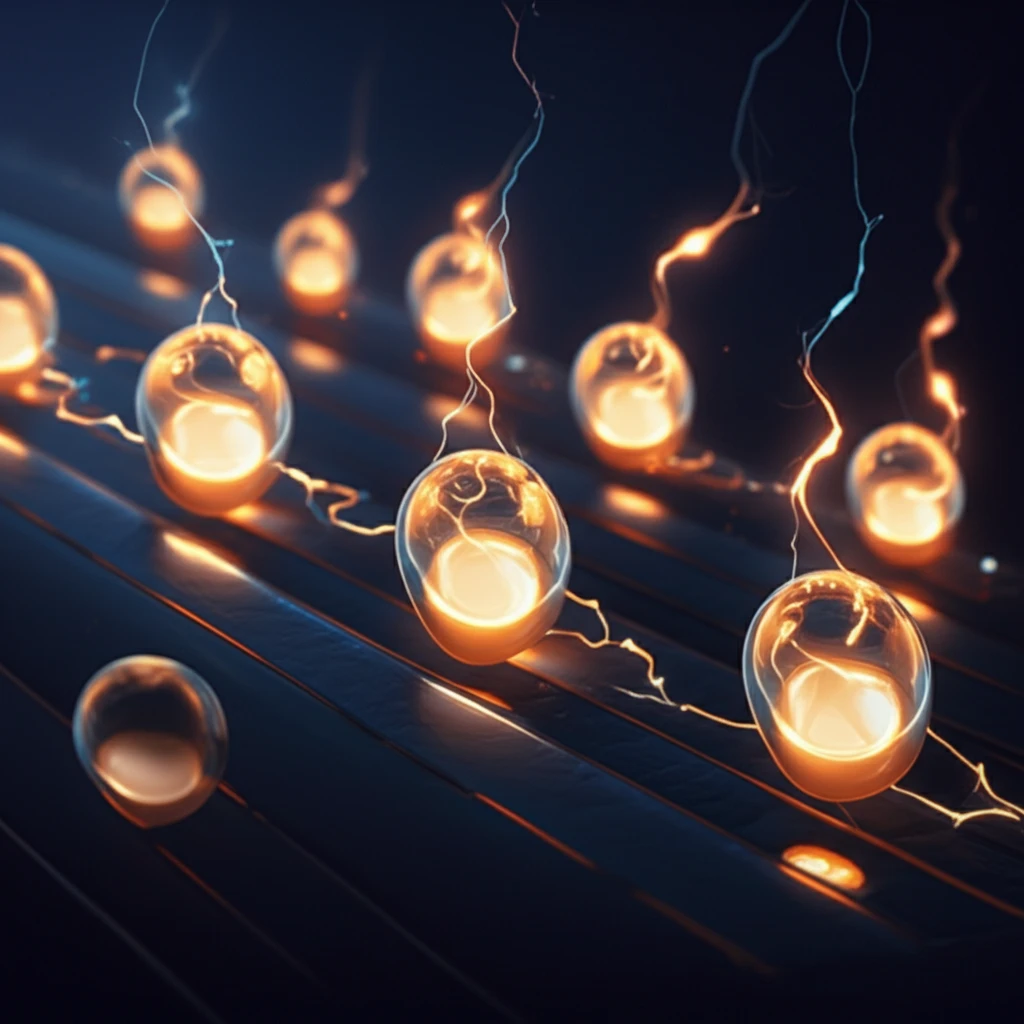
Tiny Drops, Big Power: How Microfluidics Could Revolutionize Renewable Energy
"Harnessing the motion of microfluidic droplets for clean energy generation – a surprising innovation in sustainable tech."
In a world increasingly focused on sustainable energy, researchers are exploring innovative solutions in the most unexpected places. One promising area is the field of microfluidics, where the manipulation of tiny volumes of fluids can lead to surprisingly powerful applications. Imagine generating electricity from the motion of microscopic water droplets – it’s not science fiction, but a rapidly developing reality.
Microfluidic energy harvesting focuses on converting various forms of energy present at a small scale into usable electrical power. Several methods have been explored such as electrostatic, electret, piezoelectric, electro-magnetic, photovoltaic, or thermoelectric. The electret method, particularly when using inorganic materials, has gained significant attention due to its corrosion resistance, ease of integration into Microelectromechanical systems (MEMS), and overall stability. This method relies on the principle of a variable capacitor where the voltage or charge changes due to the deformation of a capacitor based on external vibration.
Recent research has demonstrated the feasibility of using microfluidic devices to capture energy from various sources, like the movement of water. A recent study proposes a microfluidic structure that uses damping motion on a microfabricated inorganic electret silicon oxide (SiO2) film for energy harvesting. The system converts the kinetic energy of the oscillating microfluidic into electrical energy. This innovative approach could pave the way for self-powered micro-devices and new strategies for renewable energy.
How Does a Microfluidic Energy Harvester Work?

The core of this technology lies in a specially designed microfluidic structure built on an electret film made of silicon dioxide (SiO2). An electret material is the electrostatic equivalent of a permanent magnet, meaning it maintains a constant electrical charge. When a device experiences an instantaneous acceleration, the microfluidic within the device changes shape, oscillating back and forth due to inertial forces. This motion generates a variable capacitance, which, when coupled with the electret film, produces an electrical current.
- Electret Film: A thin layer of silicon dioxide (SiO2) that holds a stable electrical charge.
- Microfluidic Structure: A small channel or chamber containing a fluid (e.g., a water microdrop) that can move and change shape.
- Acceleration: When the device is accelerated, the fluid inside the microfluidic structure moves due to inertia.
- Damped Oscillation: After the initial acceleration, the fluid oscillates back and forth, gradually slowing down due to damping forces.
- Capacitance Variation: The changing shape of the microfluidic alters the capacitance (the ability to store electrical charge) between the fluid and the electret film.
- Electrical Current Generation: The variation in capacitance induces an electrical current, which can be harvested and used to power small devices.
The Future of Microfluidic Energy Harvesting
This research demonstrates the potential of microfluidic structures for energy harvesting, particularly in applications where small-scale, self-powered devices are needed. While the energy generated by a single device might be small, arrays of these harvesters could potentially provide a significant power source for microelectronics, sensors, and other low-power applications. Further development and optimization of these technologies could lead to new and innovative solutions for renewable energy and sustainable technology.
